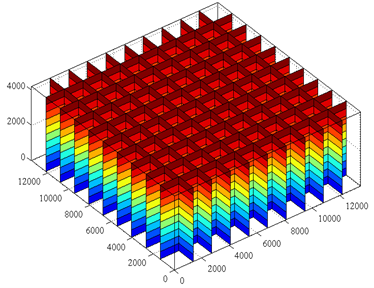PARALLEL PERFORMANCE OF THE EXPLICIT FDTD METHODS APPLIED ON 3D ACOUSTIC WAVE EQUATION
DOI:
https://doi.org/10.71146/kjmr182Keywords:
Parallel Computing, Finite Difference Time Domain (FDTD), 3D Acoustic Wave Equation, Numerical Simulation, MATLAB ImplementationAbstract
The 3D acoustic wave equation is a second-order linear hyperbolic partial differential equation. It is widely studied in acoustics, fluid dynamics, electromagnetism, and seismology within both science and engineering fields. Among the various numerical methods, the finite difference method is considered to be the simpler to understand and easy to implement. Based on the discretize schemes finite difference time domain method described by the explicit scheme in which spatial second order derivatives are evaluated at the previous time step. The solution of 3D acoustic wave equation may be required on the high-resolution mesh points consequently more computational resources are required. In this study parallel algorithm for the numerical solution of 3D acoustic wave equation is proposed and designed by using data parallel approach and message passing schemes. The algorithm is implemented on shared memory parallel system using MATLAB parallel computing mode. The parallel performance of the designed algorithm is analyzed on different mesh sizes and time steps. It is revealed that the proposed algorithm may reduce computational time up to 3 times as compared to sequential solution algorithm. The proposed parallel algorithm remains more efficient on workers while for the efficiency of the algorithm drops because of the high communication time. The results of the proposed research could be utilized in the large-scale simulations of 3D acoustic wave equations and may enable to simulate the acoustic wave pressure at more refined meshes on high performance computing systems.
Downloads

Downloads
Published
Issue
Section
License
Copyright (c) 2025 Nabi Bux kalhoro, Shakeel Ahmed Kamboh, Dr Afaque Ahmed Bhutto, Saeed Ahmed Rajput, Mansoor Ali Khaskheli (Author)

This work is licensed under a Creative Commons Attribution 4.0 International License.






